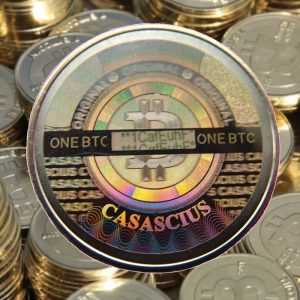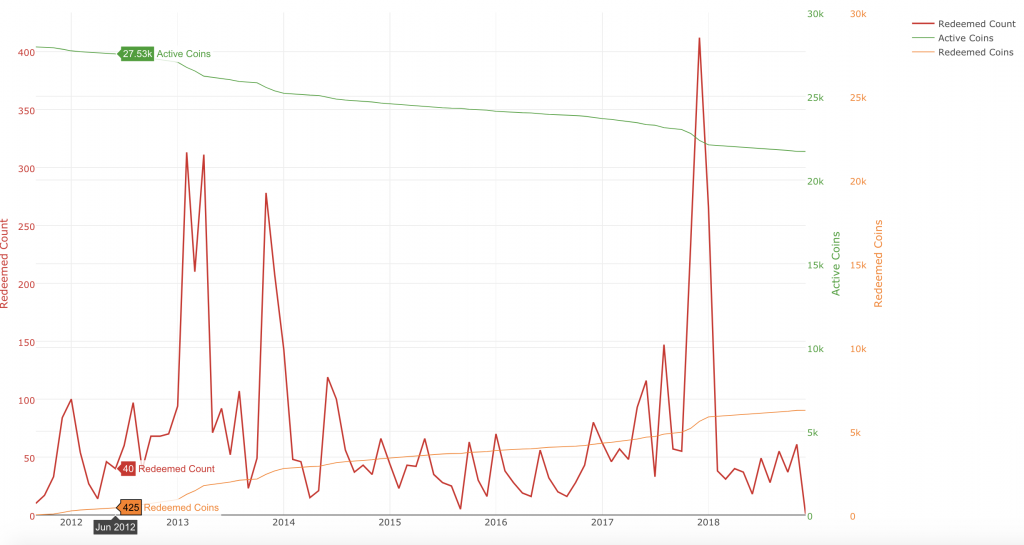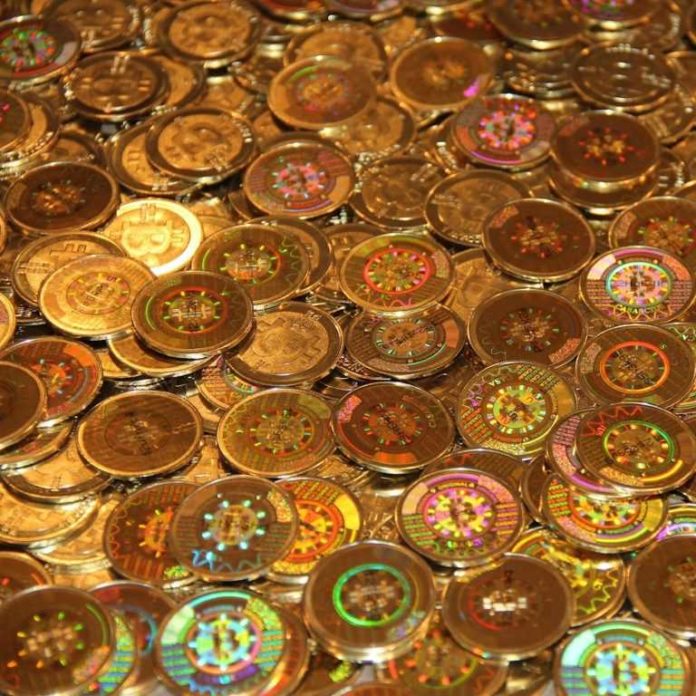Bitcoin was born as a wholly digital currency, and it might have remained that way had it not been for the efforts of an early adopter from Utah. His name was Mike Caldwell, but on the Bitcointalk forum, he was better known as Casascius. The physical bitcoin creator took a digital phenomenon and converted it into physical matter. For the first time in history, bitcoins were tactile.
Also read: Bitcoin History Part 3: Turning on the Faucet
Why a Physical Bitcoin?
 “Why a physical bitcoin?” That was the question with which Bitcointalk forum regular Casascius titled his thread on Sep. 6, 2011. Hours earlier, he’d posted a separate thread announcing the launch of the first physical bitcoins. In many respects, his creations looked and felt just like conventional coins, and back then were worth scarcely more. In fact, with the first batch that Casascius released, the cost of postage alone was set at 1 BTC, while each 1 BTC coin was priced at 1.25 BTC to cover production costs.
“Why a physical bitcoin?” That was the question with which Bitcointalk forum regular Casascius titled his thread on Sep. 6, 2011. Hours earlier, he’d posted a separate thread announcing the launch of the first physical bitcoins. In many respects, his creations looked and felt just like conventional coins, and back then were worth scarcely more. In fact, with the first batch that Casascius released, the cost of postage alone was set at 1 BTC, while each 1 BTC coin was priced at 1.25 BTC to cover production costs.
“One side has a hologram,” explained Casascius. “Underneath the hologram layer is a private key. The first 8 characters of the bitcoin address appears on each coin.” “These look awesome,” replied forum user ‘the joint,’ “but why would you buy this given the current state of the Bitcoin market/economy? This might be nice as an investment if there was a good indicator that your investment would give you any kind of return.” When he wrote these words, 1 BTC was trading for $6.86.
The 1,000 BTC Physical Coin
So successful were the Casascius physical coins that the 1 BTC batch was followed by 10, 25, 100, and even 1,000 BTC editions. At bitcoin’s peak, around this time last year, that holographic 1,000 BTC coin would have been worth around $20 million. Mike Caldwell sold his Casascius physical coins until late 2013, by which point close to 28,000 coins had been minted. Almost half of those coins have now been redeemed, but over 47,000 BTC remains unclaimed at this time, waiting until the owners can bring themselves to peel off the holographic layer and redeem them using the private key.

“Now we can cross out the line in the first sentence of the [Bitcointalk forum] FAQ, which is that “a bitcoin is not tangible,” wrote Casascius, upon announcing his invention. “The fact that a bitcoin is no longer invisible, I think, is huge in and of itself.” He wasn’t wrong. While BTC has remained a primarily digital currency, today physical bitcoins exist in many forms including paper wallets, commemorative coins, and limited edition trinkets. Simply through engraving, printing, or etching the public and private keys to a bitcoin address, and obfuscating the latter, anything can be turned into a physical bitcoin and used to hold any amount of BTC or BCH.
A big #Casascius HODLer just capitulated. #bitcoin https://t.co/nHPrNT9YTa pic.twitter.com/Q3sHDH8tR5
— Melik Manukyan
ludvigart.com (@realLudvigArt) November 20, 2018
https://platform.twitter.com/widgets.js
Casascius started out as just another arcane pseudonym on an obscure digital currency enthusiasts’ forum. Today, his moniker stands synonymous with the birth of physical bitcoins.
Bitcoin History is a multipart series from news.Bitcoin.com charting pivotal moments in the evolution of the world’s first and finest cryptocurrency. Read part three here.
Images courtesy of Shutterstock and N2liquid.
Need to calculate your bitcoin holdings? Check our tools section.
The post Bitcoin History Part 4: Casascius Creates Physical Bitcoins appeared first on Bitcoin News.
Source: NewsBtc





















